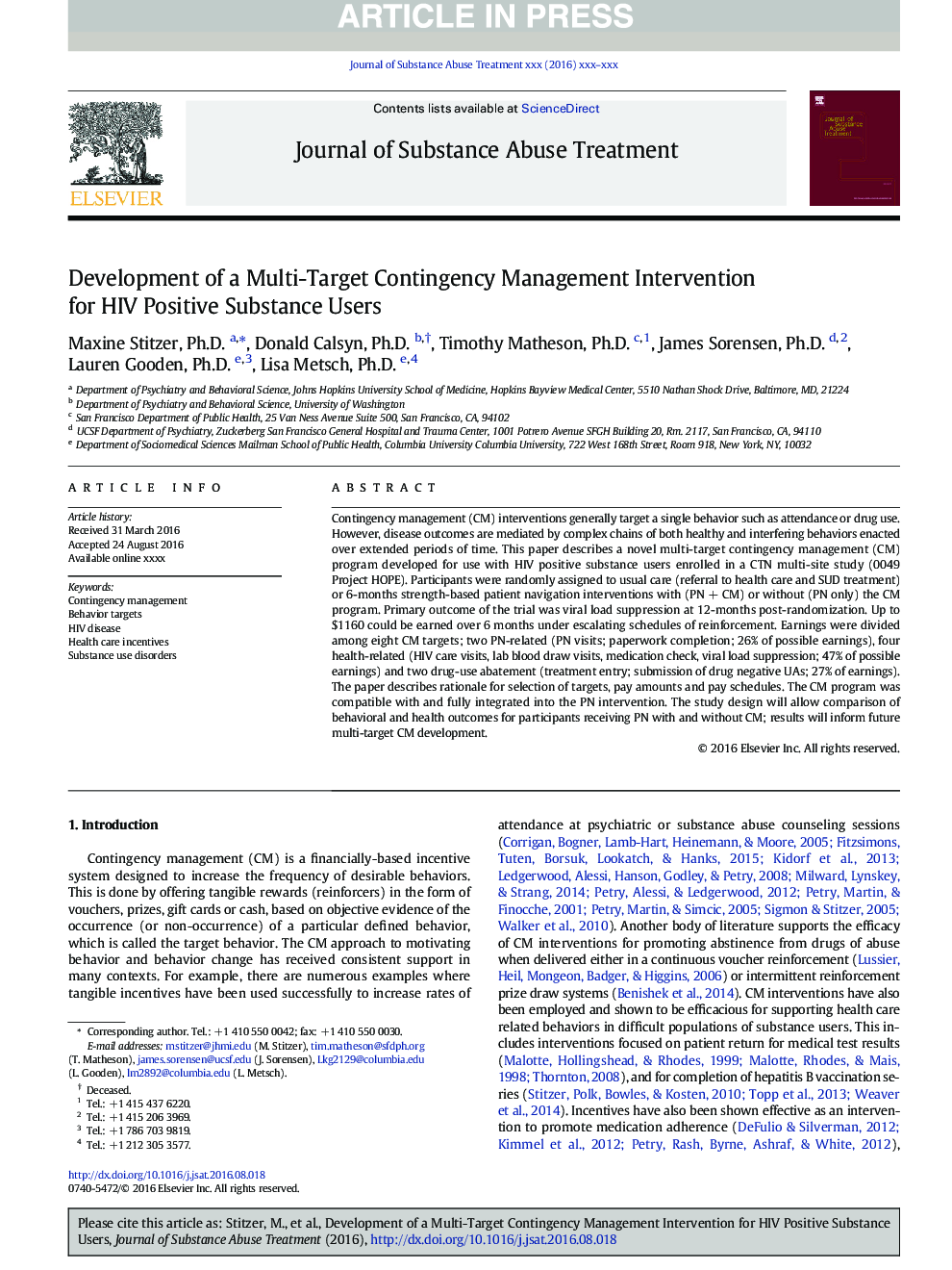| Article ID | Journal | Published Year | Pages | File Type |
|---|---|---|---|---|
| 4932412 | Journal of Substance Abuse Treatment | 2017 | 6 Pages |
Abstract
Contingency management (CM) interventions generally target a single behavior such as attendance or drug use. However, disease outcomes are mediated by complex chains of both healthy and interfering behaviors enacted over extended periods of time. This paper describes a novel multi-target contingency management (CM) program developed for use with HIV positive substance users enrolled in a CTN multi-site study (0049 Project HOPE). Participants were randomly assigned to usual care (referral to health care and SUD treatment) or 6-months strength-based patient navigation interventions with (PNÂ +Â CM) or without (PN only) the CM program. Primary outcome of the trial was viral load suppression at 12-months post-randomization. Up to $1160 could be earned over 6 months under escalating schedules of reinforcement. Earnings were divided among eight CM targets; two PN-related (PN visits; paperwork completion; 26% of possible earnings), four health-related (HIV care visits, lab blood draw visits, medication check, viral load suppression; 47% of possible earnings) and two drug-use abatement (treatment entry; submission of drug negative UAs; 27% of earnings). The paper describes rationale for selection of targets, pay amounts and pay schedules. The CM program was compatible with and fully integrated into the PN intervention. The study design will allow comparison of behavioral and health outcomes for participants receiving PN with and without CM; results will inform future multi-target CM development.
Related Topics
Life Sciences
Neuroscience
Biological Psychiatry
Authors
Maxine Ph.D., Donald Ph.D., Timothy Ph.D., James Ph.D., Lauren Ph.D., Lisa Ph.D.,
